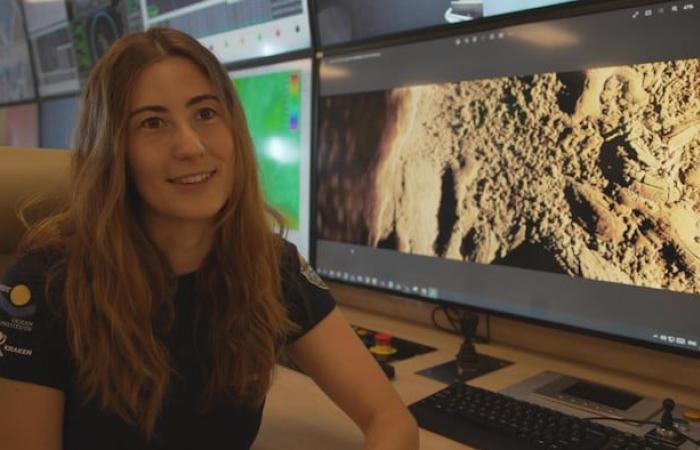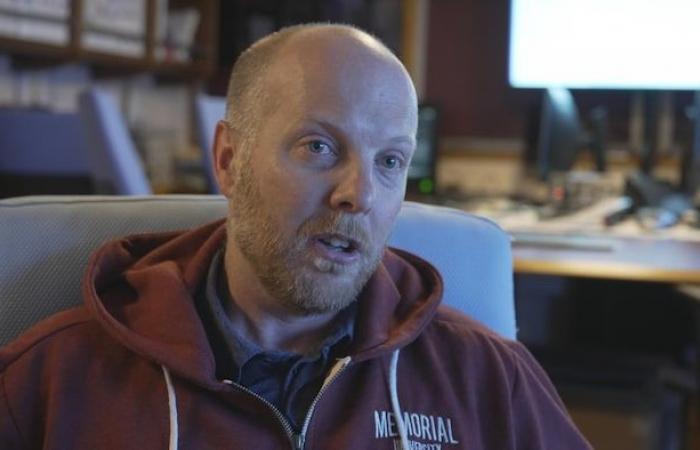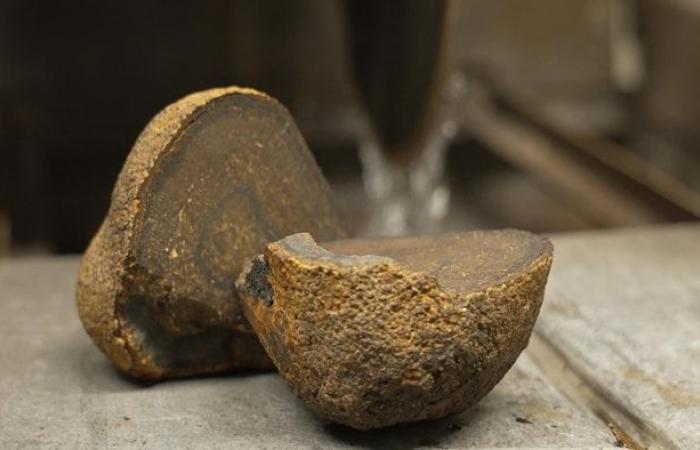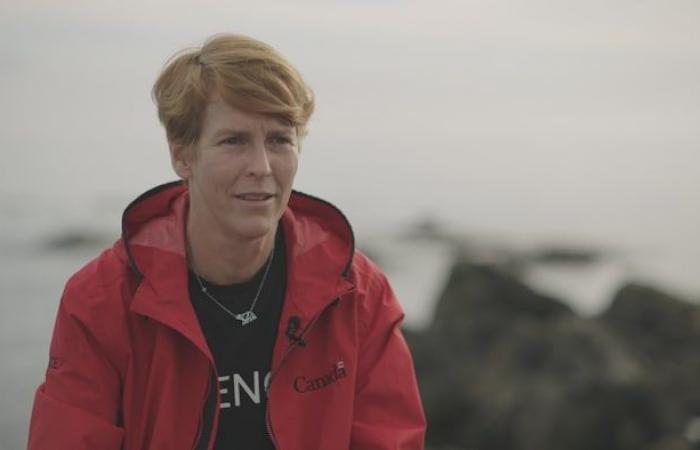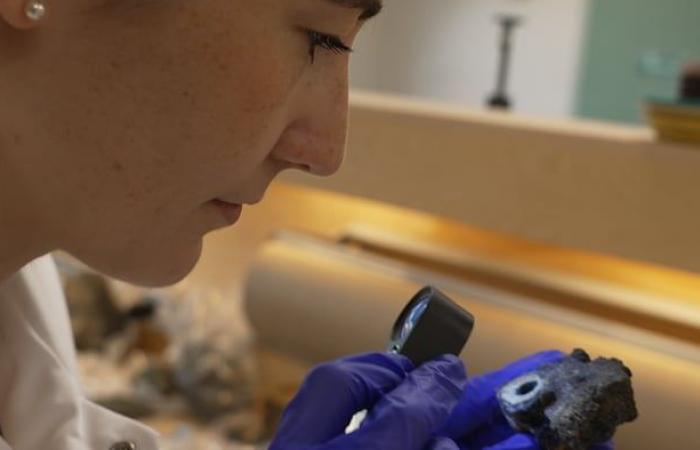Caroline Gini didn’t know what she was getting into when she decided to pursue her doctorate at Memorial University of Newfoundland. This Swiss woman, originally from Geneva, did not realize that this Atlantic province was renowned for the harshness of its climate: fog, wind and rain.
Not to mention that in 2019, she had no idea that a pandemic was coming and that she would find herself confined on the island, far from her family, unable to participate in cruises to continue her research in marine geology . Let’s just say I had a lot of time to prepare for my next mission
she said, laughing.
Five years later, all that time has paid off. In collaboration with Kraken Robotics, a small company in Saint John, Newfoundland and Labrador, Caroline Gini has developed a sonar capable of producing never-before-seen images of the seabed.
Open in full screen mode
Caroline Gini specialized in marine geology.
Photo : -
It tested this technology on the high seas for the first time in fall 2023, off the coast of the Galapagos Islands in the Pacific Ocean. The results exceeded the expectations of his entire team. We have never seen such images of the seabed, she says, amazed. They look like photos.
This sonar – a synthetic aperture interferometric sonar, for those in the know – arouses much desire… and at the same time it arouses certain fears. The mining industry could use it to facilitate the extraction of metals from the seabed. This possibility worries biologists, who seek to protect the fragile ecosystems of the abyssal depths.
Exploding demand
In the context of the energy transition, demand for certain metals is exploding. To fight climate change, we are preparing to manufacture millions of batteries for electric vehicles, wind turbines and solar panels.
These technologies require cobalt, nickel and other strategic metals. Terrestrial deposits are increasingly difficult to exploit and the industry now covets the ocean depths.
Canadian mining company The Metals Company has already tested its machinery in the Clarion-Clipperton area, located in the Pacific Ocean, between Hawaii and Mexico.
Its machines look like huge vacuum cleaners. They scrape the ocean floor and suck up rocks the size of potatoes. These rocks are called polymetallic nodules
in scientific jargon.
The nodules are rich in nickel and cobalt
says John Jamieson, met in his laboratory in Saint John, Newfoundland and Labrador. This holder of the Canada Research Chair in Marine Geology at Memorial University directs Caroline Gini’s research.
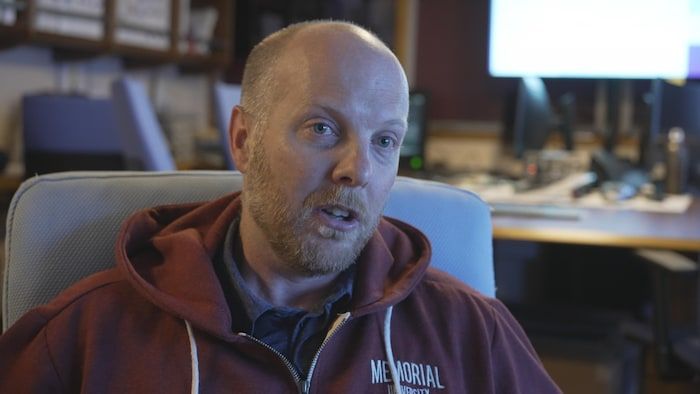
Open in full screen mode
John Jamieson holds the Canada Research Chair in Marine Geology at Memorial University.
Photo : -
Nodules form over millions of years
he continues, taking out some of these precious rocks from a drawer.
More specifically, they form when successive layers of metallic minerals accumulate around a core, such as a shell fragment or a shark tooth. They are generally found between 4000 and 6000 m depth, on the ocean floor.
For mining companies, the process couldn’t be simpler. You simply have to suck them up from the bottom of the water and bring them to the surface.
Kraken Robotics’ sonar, tested by Caroline Gini, could make the task easier for mining companies. Attached to a remote-controlled underwater vehicle, it can locate a rock formation 3 cm wide, at a distance of 150 m, on either side of the sonar. Enough to detect all the nodules around.
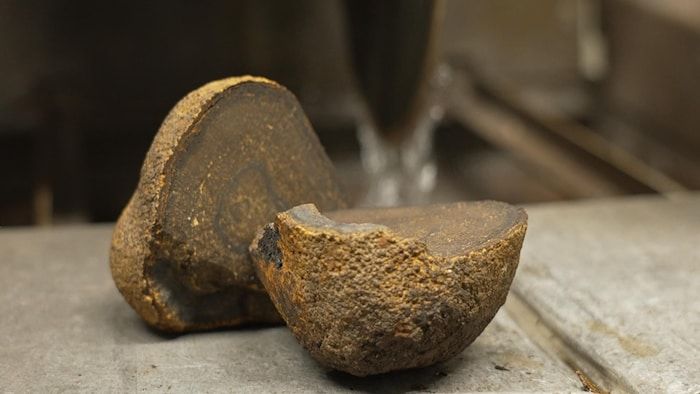
Open in full screen mode
A nodule from the seabed cut in two
Photo : -
In defense of ecosystems
When we talk to her about the possible applications of sonar for the mining industry, Caroline Gini remains on her guard. This is because it is a sensitive subject. Many biologists and environmentalists oppose seabed mining. They want to protect one of the last pristine places on the planet.
This is the case of Cherisse Du Preez. This marine biologist from Fisheries and Oceans Canada lives and works on Vancouver Island, British Columbia. She has led numerous sea expeditions to study the animals that live in the deep ocean.
Among his feats of arms: the discovery of a nursery of Pacific white rays, off the Canadian coast, housing a million eggs. It is the largest nursery of its kind ever found.

Open in full screen mode
Cherisse Du Preez is a marine biologist at Fisheries and Oceans Canada.
Photo : -
Her passion is evident when she starts talking about her favorite subject. The seabed has escaped all the mass extinctions on Earth, she points out. The oldest animals on the planet live there. If we disrupt this ecosystem, it will be permanent. We won’t get a second chance.
Caroline Gini is not insensitive to Cherisse Du Preez’s arguments. She suggests that Kraken Robotics’ sonar could very well be used to study seabed habitats to better protect them.
John Jamieson, for his part, believes that the opposition of biologists and ecologists is based on overly simplistic arguments. He believes that mining for seabed metals could be preferable to opening new land mines.
If we don’t extract nickel from the seabed to make batteries, where will we get it? At the moment, most of our nickel comes from rainforests in Indonesia. It’s not better!
he points out.
When will there be a mining code?
To settle the debate, an organization was created by the United Nations, the International Seabed Authority (IAFM), which is based in Kingston, Jamaica.
It is responsible for adopting a mining code to regulate the extraction of metals in international waters. This code is supposed to both regulate the industry and protect ecosystems.
After years of discussions, the code has not yet been adopted by countries that have ratified the United Nations Convention on the Law of the Sea, members of theAIFM.

Open in full screen mode
The seabed contains metals in high demand to face the energy transition.
Photo : -
Cherisse Du Preez participated in some meetings of theAIFM. Sometimes we are one or two scientists against around sixty representatives of mining companies, she says. We are shorthanded. Even if 99% of scientists believe that we should not move forward, it is very difficult to make one’s voice heard.
In 2023, Canada heard his call and that of hundreds of other scientists. The country has come out in favor of a moratorium on seabed mining. Several other states, including France and Germany, have taken a similar position. They advocate the precautionary principle.
Will this be enough to calm the ambitions of mining companies? This is far from certain. The Metals Company has indicated its intention to undertake large-scale operations as early as 2025, with or without a mining code.
The battle for the seabed is far from over.
The report by journalist Dominique Forget and director Yanic Lapointe is presented on the show Discovery Sunday at 6:30 p.m. (EST) on ICI Télé, and Saturday at 6:30 p.m. on ICI RDI. It is also available as a catch-up on the ICI Tou.tv website (New window)

